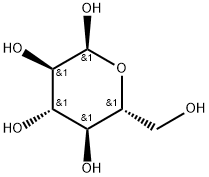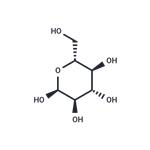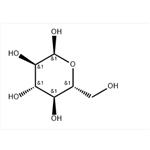Chemical Properties
white, odorless, fine crystalline powder
Uses
α-D-Glucose is used:
- As a reducing agent in the preparation superparamagnetic ferrous oxide (Fe3O4) nanoparticles and silver nanocrystals.
- As an additive for the formation of isoporous polystyrene-block-poly(4-vinylpyridine) (PS-b-P4VP) diblock copolymer membranes.
- For glycosylation of cell-penetrating poly(disulfide)s (CPDs) with improved solubility to achieve multifunctional cellular uptake.
- As a precursor in the synthesis of metal/carbon nanohybrids under hydrothermal conditions.
Uses
D-(+)-Glucose is a common natural sugar involved in processes such as energy production, glycosylation, and formation of glycans that provide structure to cells. Glucose is involved in a detrimentatl process in cells called glycation. Glucose is used as a supplement for cell culture and in numerous cellular processes and molecular biology applications.
Definition
ChEBI: D-Glucopyranose having alpha-configuration at the anomeric centre.
Purification Methods
Recrystallise -D-glucose slowly from aqueous 80% EtOH, then dry it over P2O5 in vacuo. Alternatively, crystallise it from water at 55o, then dry it for 6hours in a vacuum oven between 60-70o/2mm. Its solubilities are: H2O (~50%), EtOH (1.7%). [Hendricks et al. J Am Chem Soc 56 99 1934, Beilstein 1 IV 4302.] [For equilibrium forms see Angyal Adv Carbohydr Chem 42 15 1984, Angyal & Pickles Aust J Chem 25 1711 1972.]




